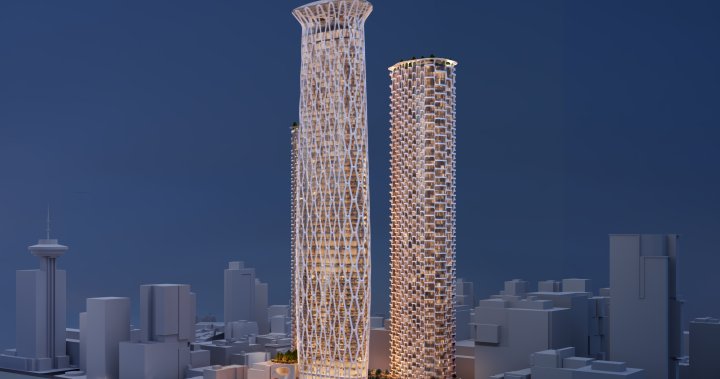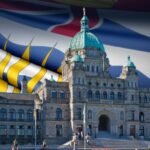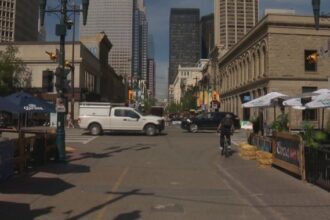In a bold move that could dramatically reshape Vancouver’s iconic skyline, developers have unveiled plans for what would become British Columbia’s tallest tower—a striking 1,070-foot residential skyscraper that promises to transform the city’s downtown core.
The ambitious proposal from Henson Developments calls for a 94-storey mixed-use building at the corner of Thurlow and Melville Streets, soaring nearly 200 feet above the current provincial record-holder, the Shangri-La Hotel. If approved, this architectural marvel would not only claim the title of B.C.’s tallest structure but would rank among the most impressive urban developments in Canadian history.
“This represents a fundamental shift in how we envision Vancouver’s urban landscape,” said city planning director Michael Gordon. “The proposal challenges our traditional height restrictions while attempting to address critical housing needs in one of North America’s most expensive real estate markets.”
The development would deliver approximately 800 residential units, with 162 designated as social housing—a key feature that developers hope will help navigate the city’s stringent approval process. The remaining units would be market condominiums, likely commanding premium prices given their unprecedented views of the mountains, ocean, and cityscape.
City officials are approaching the proposal with measured interest. Vancouver’s planning department has confirmed receipt of the application but emphasizes that the project faces a comprehensive review process, including public consultations and technical evaluations that could take years to complete.
“We’re examining this proposal through multiple lenses—its architectural merit, community impact, housing contribution, and how it aligns with our long-term urban vision,” noted Vancouver city councillor Sarah Mitchell. “While Vancouver certainly has an appetite for landmark projects, they must serve broader public interests beyond simply height records.”
The timing of this proposal coincides with Vancouver’s ongoing housing crisis, which has pushed officials to reconsider traditional development constraints. With vacancy rates at historic lows and affordability concerns continuing to plague local residents, the inclusion of social housing units positions the project as partially responsive to these pressing challenges.
Architectural renderings reveal a slender glass tower with a distinctive tapered design intended to minimize shadowing while maximizing views. Environmental considerations appear prominent in the design, with developers promising LEED Platinum certification, extensive green spaces, and next-generation energy efficiency systems.
Public reaction has been predictably mixed. Urban development advocates have praised the proposal’s ambition and potential to establish Vancouver more firmly as a world-class city. Meanwhile, community groups express concerns about potential impacts on traffic, public services, and the character of surrounding neighborhoods.
“This isn’t just about building the tallest tower—it’s about whether Vancouver is ready to embrace truly vertical living on a scale we haven’t seen before,” explained urban planning expert Dr. Emily Zhang of the University of British Columbia. “Cities like Toronto and New York have long embraced supertall buildings as part of their urban identity. Vancouver has traditionally taken a more measured approach to its skyline.”
The economic implications extend beyond the construction phase. Economic analysts project the development could generate thousands of jobs and inject hundreds of millions into the local economy, while potentially attracting international investment at a time when Canadian real estate markets face uncertainty.
As Vancouver continues to evolve from a picturesque coastal city to a major global metropolis, this proposal raises fundamental questions about urban identity and future growth patterns. Will Vancouver’s transformation into a city of skyscrapers enhance its livability and sustainability, or will it compromise the natural beauty and human scale that have defined its character for generations?


















